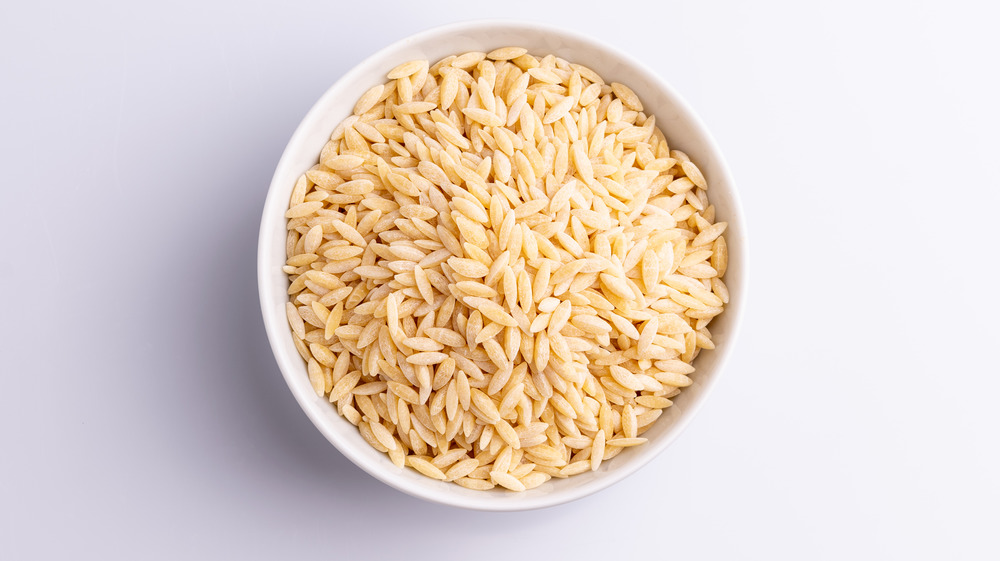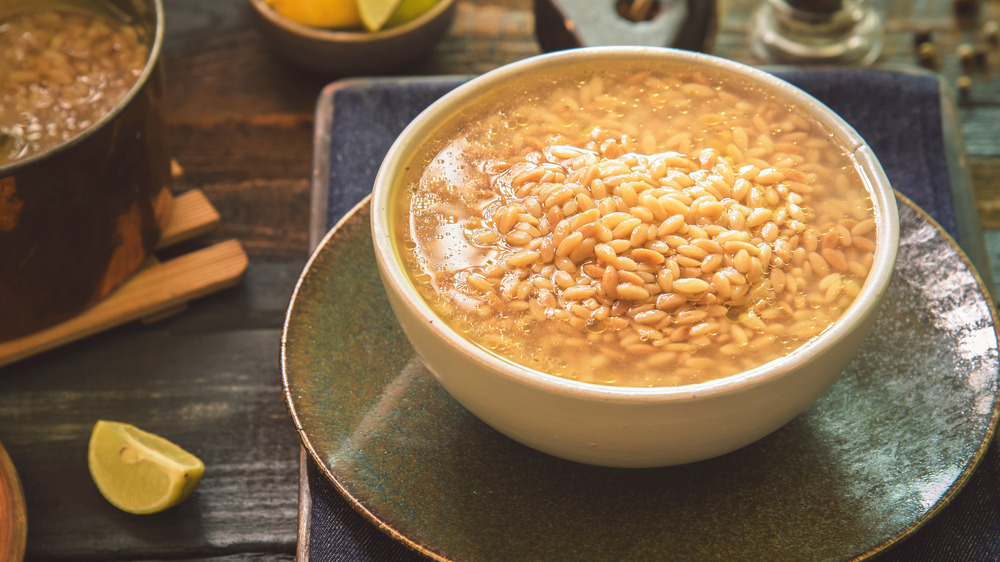What Is Orzo Actually Made Of?
Though orzo gets its name from the Italian word for barley, according to the Collins Dictionary, the versatile grain actually doesn't contain any barley whatsoever. It's made from wheat semolina flour, meaning that while it looks like rice, orzo actually tastes like pasta (via Verywell Fit).
To make things even more complicated, Taste.com.au says it's also sometimes referred to as risoni. If you spot the ingredient's lookalike in a Greek dish, according to Tried and Supplied, it's probably actually kritharaki (and don't confuse it with ouzo, which would make for a much more potent concoction). Dining in a Turkish restaurant? You may spot arpa şehriye, which Cook's Info translates to "songbird tongue," a decidedly poetic way of looking at the petite grains.
Confused yet? Don't be. After you finish apologizing to your celiac friend for finding yet another carb they can't consume, whip out some of your favorite ingredients and get ready to experiment — we think this carbohydrate powerhouse just might become a new staple in your kitchen. And unlike spaghetti and meatballs, orzo is something you could actually find in Italy, so you can go straight to the source for flavor inspiration, or branch out with other Mediterranean flavors.
How do you use it?
In the simplest preparation style, orzo can be made like any other pasta — boil it in generously salted water and then drain. Note that the volume will double, with 1 cup of raw orzo yielding about 2 cups of the cooked pasta (via Good Housekeeping). Once cooked, orzo can be combined with sauce for a simple dish, or even mixed into a pasta salad and served cold, like in this dish from Spend With Pennies.
Don't stop there, though! Orzo can soak up some serious liquid, which is why you'll often see it incorporated in soups. Just note that because the grains can absorb so much of whatever they're in, cooked orzo should be a last minute addition to your soup, as Eat This, Not That! clarifies. Verywell Fit states you can also mix up some of your go-to meals by substituting orzo where you might typically use rice or quinoa. Finally, you can play around with a twist on risotto, using an actual Italian dish as inspiration. According to Food & Wine, in Friuli, Italy, orzo is substituted for typical risotto rice grains to make a regional dish called orzotto.
Delicious and versatile? Trust us — if you don't already have a box of orzo in the back of your pantry, you need to pick one up, like, yesterday.

